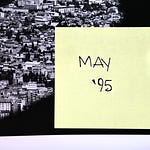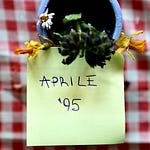It is March 1992.
In former Yugoslavia the mission of UNPROFOR, the new United Nations Protection Force, has started [you can listen to the latest episode of BarBalkans - Podcast here].
On March 8, the Blue Helmets from Belgium, the Netherlands, Luxembourg, Scandinavian countries, Canada, Argentina, Czechoslovakia, Poland and other countries from all over the world arrive in Croatia.
The headquarters is located in Sarajevo. A symbolic presence, in the hope that this will prevent the escalation of violence between ethnic groups in Bosnia and Herzegovina.
It is not enough.
The situation becomes increasingly unmanageable, the space for dialogue thinner. Until it disappears completely.
The war in Bosnia is set.
Independence!
The decision to hold a referendum on independence in Bosnia and Herzegovina was made in January.
Actually, Sarajevo responded to the will of the European Community, which considers the referendum a pre-condition for accepting the request for international recognition of the Republic of Bosnia and Herzegovina. At least 50 percent of those eligible to vote must participate, with a required majority of two-thirds of valid votes.
The February 29/March 1 referendum causes serious tensions in the Republic, particularly due to opposition from the extremists ethnic Serb.
«Everyone could feel the war inevitably coming», some foreign journalists will say later.
Only the achievement of a quorum is not sure. In Sarajevo, militants of the Serbian Democratic Party (SDS) also try to oppose the collection of ballots.
«Do you support an independent Bosnia and Herzegovina, a State-community of sovereign and constituent nations - Muslims, Serbs, Croats?»
99.43% vote in favor. But the electoral base is 63.4%, too little to consider it as a solid State entity.
The results are announced on March 3 and independence becomes real.
But violence, aggression and shootings also become real.
The Crisis Committee of the Serbian people decides to erect barricades, to divide Sarajevo along ethnic lines.
This is the trigger for a shootout against Serbs of Bosnia’s militias and Bosniaks paramilitary units, the Green Berets, created by criminal Jusuf-Juka Prazina.
Ten people die and a cloud of fear covers the capital city. It is clear that peace or war is in the hands of the paramilitaries of the respective sides, while the Croats of Bosnia remain ambiguously silent.
There are shooting in the villages around Sarajevo. On March 8, the Yugoslav People's Army (JNA) sends artillery units from Tuzla towards the Sava River.
On March 13, the Bosnian government decides to introduce military conscription to all young men.
"More history than can be consumed”
Despite the increasing violence, the European Community is not giving up the desire to forge the new Republic of Bosnia and Herzegovina, as demonstrated during the International Conference in Sarajevo in February.
José Cutileiro, CEE special coordinator for Bosnia, proposes the Statement of Principles for New Constitutional Arrangements for Bosnia and Herzegovina to the Croat Mate Boban, the Bosnian Alija Izetbegović and the Serb Radovan Karadžić.
Respect for borders is counterbalanced by a decentralized internal structure, where the concept of «ethnic majority» for administrative units is formally written down for the first time.
On March 18, the three ethnic components of the Republic are legitimized as constituent people, on the basis of national, economic and geographical criteria.
A «framework map of municipalities» is created:
Bosniaks: 52 municipalities (44% of the territory)
Serbs: 35 municipalities (44% of the territory)
Croats: 20 municipalities (12% of the territory)
No one is actually satisfied. Not surprisingly, the Declaration is approved but not signed.
On March 24, the Assembly of the Serbian people in Bosnia and Herzegovina rejects the Declaration of a sovereign and independent State.
As Winston Chruchill once said: «The Balkans produce more history than they can consume».

Supported by JNA leadership and by soldiers on the battlefield, SDS’ Serbs of Bosnia spread the unfounded idea that Muslims will attack soon civilians.
On March 25, Bosanski Brod is heavily attacked. The goal is to conquer the city on the Sava River, getting control of Northeastern Bosnia and descending into Western Bosnia (both regions with a Croatian majority).
Controlling Neum, the only port on the Adriatic Sea, they would interrupt all Croats of Bosnia’s contacts with Dubrovnik (and Zagreb) and then lock Bosniaks.
By now, the Ram Plan for the creation of Greater Serbia has become public knowledge.
However, it does not prevent the break-in in Eastern Herzegovina and Northern Bosnia (regions with a Serb majority) of Serbian and Montenegrin paramilitary units - including the bloody Arkan’s Tigers - to begin ethnic cleansing operations.
Meanwhile, on March 30, negotiations in the Cutileiro Plan’s framework resume in Brussels.
But it is clear that the Serbian side is no longer willing to compromise and has fully accepted the use of arms.
This is clearly stated by its leader, Radovan Karadžić: «We attack cities to kill vipers». The paradigm of a specific approach to the ethnic conflict: the poor and patriarchal village against the multicultural cities.
These men - if they can still be defined men - have rejected every principle of civil life.
The war in Bosnia can no longer be stopped.
If you liked this article, you can spread this parallel journey and the free weekly newsletter:
If you know someone who can be interested in this newsletter, why not give them a gift subscription?
Here is the archive of BarBalkans - Podcast:
And here the summary of 1991.


















Share this post